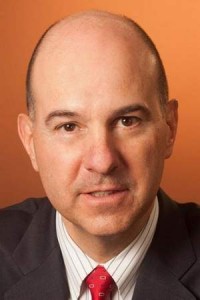The Hill-Rom v. Stryker case decided in June has not gotten a lot of coverage. There are some interesting portions of the opinion that will appeal to patent prosecutors.
Present Invention
Judge Moore, writing for the court, gave a summary of recent case law and when the use of the term “present invention” can be limiting:
Disavowal requires that “the specification [or prosecution history] make[] clear that the invention does not include a particular feature,” SciMed Life Sys., Inc. v. Advanced Cardiovascular Sys., Inc., 242 F.3d 1337, 1341 (Fed. Cir. 2001), or is clearly limited to a particular form of the invention, Edwards Lifesciences LLC v. Cook Inc., 582 F.3d 1322, 1330 (Fed. Cir. 2009) (“[W]hen the preferred embodiment is described in the specification as the invention itself, the claims are not necessarily entitled to a scope broader than that embodiment.”) (quotation omitted). For example, we have held that disclaimer applies when the patentee makes statements such as “the present invention requires . . .” or “the present invention is . . .” or “all embodiments of the present invention are . . . .” See Regents of Univ. of Minn. v. AGA Med. Corp., 717 F.3d 929, 936 (Fed. Cir. 2013); Honeywell Int’l, Inc. v. ITT Indus., Inc., 452 F.3d 1312, 1316-19 (Fed. Cir. 2006); SciMed, 242 F.3d at 1343-44;Astrazeneca AB v. Hanmi USA, Inc., 554 F. App’x 912, 915 (Fed. Cir. 2013) (nonprecedential). We have also found disclaimer when the specification indicated that for “successful manufacture” a particular step was “require[d].” Andersen Corp. v. Fiber Composites, LLC, 474 F.3d 1361, 1367 (Fed. Cir. 2007) (“Those statements are not descriptions of particular embodiments, but are characterizations directed to the invention as a whole.”). We found disclaimer when the specification indicated that the invention operated by “pushing (as opposed to pulling) forces,” and then characterized the “pushing forces” as “an important feature of the present invention.”SafeTCare Mfg., Inc. v. Tele-Made, Inc., 497 F.3d 1262, 1269-70 (Fed. Cir. 2007). We found disclaimer when the patent repeatedly disparaged an embodiment as “antiquated,” having “inherent inadequacies,” and then detailed the “deficiencies [that] make it difficult” to use. Chicago Bd. Options Exch., Inc. v. Int’l Sec. Exch., LLC, 677 F.3d 1361, 1372 (Fed. Cir. 2012) (“[T]he specification goes well beyond expressing the patentee’s preference . . . and its repeated derogatory statements about [a particular embodiment] reasonably may be viewed as a disavowal . . . .”). Likewise, we found disclaimer limiting a claim element to a feature of the preferred embodiment when the specification described that feature as a “very important feature . . . in an aspect of the present invention” and disparaged alternatives to that feature. Inpro II Licensing, S.A.R.L. v. T-Mobile USA Inc., 450 F.3d 1350, 1354-55 (Fed. Cir. 2006).
There is no such disclaimer or lexicography here. There are no words of manifest exclusion or restriction. The patents-in-suit do not describe the invention as limited to a wired datalink. There is no disclosure that, for example, the present invention “is,” “includes,” or “refers to” a wired datalink and there is nothing expressing the advantages, importance, or essentiality of using a wired as opposed to wireless datalink. Nor is there language of limitation or restriction of the datalink. Nothing in the specification or prosecution history makes clear that the invention is limited to use of a cable as a datalink. Absent such language, we do not import limitations from the specification into the claims.
At another point in the opinion, Judge Moore, writing for the court, noted with respect to a different claim term:
The fact that the specification indicates that in one embodiment, messages are sent to the wall interface unit “in accordance with the present invention,” does not mean that a wall interface unit must be present in all embodiments of the invention.
During oral argument, Judge Moore made the following comments about “embodiments of the present invention”: [Listen].
Boilerplate/Heading
The opinion also took into account boilerplate, as well as a heading from the specification. Namely, the opinion stated:
In fact, this specification states that the figures depicting the use of a wired datalink merely “illustrate embodiments of the invention.” `038 patent col. 4 ll. 59-65; see also id. col. 5 ll. 30-31 (“DETAILED DESCRIPTION OF SPECIFIC EMBODIMENTS”); id.col. 22 ll. 20-31 (the “description of various embodiments” is not intended “to restrict or in any way limit the scope of the appended claims to such detail”).
I’ve reproduced these sections below.



What particularly caught my eye was the mention of the heading “Detailed Description of Specific Embodiments.” I think many prosecutors these days follow the philosophy of just using the heading “Detailed Description.” You can judge for yourself in view of this case whether the Federal Circuit has given a stamp of approval to “Detailed Description of Specific Embodiments” as being non-limiting.
Doctrine of Claim Differentiation
The CAFC has been a little bit schizophrenic in how it treats the doctrine of claim differentiation. In the Hill-Rom v. Stryker oral argument, Judge Schall had the following comments about the role of the doctrine of claim differentiation after Phillips v. AWH: [Listen]. In the Hill-Rom opinion, Judge Moore, writing for the court, noted that the doctrine of claim differentiation creates a presumption that a limitation added by a dependent claim is not required by the independent claim:
The only distinction between claim 1 and claim 2 is the limitation that the “datalink” is a wired datalink. See also id.claims 10, 18. “[T]he presence of a dependent claim that adds a particular limitation raises a presumption that the limitation in question is not found in the independent claim.” Liebel-Flarsheim, 358 F.3d at 910. This presumption is especially strong where the limitation in dispute is the only meaningful difference between an independent and dependent claim. Id. Of course, claim differentiation is not a hard and fast rule, and the presumption can be overcome by a contrary construction required by the specification or prosecution history. Seachange Int’l, Inc. v. C-COR, Inc., 413 F.3d 1361, 1369 (Fed. Cir. 2005). However, nothing in this specification or prosecution history rebuts the presumption established by the doctrine of claim differentiation.
Hill-Rom v. Stryker, __ F.3d __ (Fed. Cir. 2014).
Note also what the Phillips v. AWH en banc court said about the DOCD:
Other claims of the patent in question, both asserted and unasserted, can also be valuable sources of enlightenment as to the meaning of a claim term. Vitronics, 90 F.3d at 1582. Because claim terms are normally used consistently throughout the patent, the usage of a term in one claim can often illuminate the meaning of the same term in other claims. See Rexnord Corp. v. Laitram Corp., 274 F.3d 1336, 1342 (Fed.Cir.2001); CVI/Beta Ventures, Inc. v. Tura LP, 112 F.3d 1146, 1159 (Fed.Cir.1997). Differences among claims can also be a useful guide in understanding the meaning of particular claim terms. See Laitram Corp. v. Rexnord, Inc., 939 F.2d 1533, 1538 (Fed.Cir.1991). For example, 1315*1315 the presence of a dependent claim that adds a particular limitation gives rise to a presumption that the limitation in question is not present in the independent claim. See Liebel-Flarsheim Co. v. Medrad, Inc., 358 F.3d 898, 910 (Fed.Cir.2004).
Phillips v. AWH, 415 F.3d 1303, 1314-15 (Fed. Cir. 2008).
In contrast to Hill-Rom v. Stryker, a panel in a recent opinion made no reference to the DOCD presumption.
We now turn to the extent it should inform the claim
construction. Albecker’s position is that “if claim 11
depends on claim 10, it is axiomatic that claim 10 is broad
enough to include embodiments that have a top cushion
which is integral and continuous with the foundation.”
Appellant’s Br. 8. This is essentially a claim differentiation
argument. And, importantly, “[c]laim differentiation
is a guide, not a rigid rule.” Laitram Corp. v. Rexnord,
Inc., 939 F.2d 1533, 1538 (Fed. Cir. 1991)) (quoting Auto
giro Co. of Am. v. United States, 384 F.2d 391, 404 (Ct. Cl.
1967)); see also Seachange Int’l, Inc. v. C–COR, Inc., 413
F.3d 1361, 1369 (Fed. Cir. 2005) (reiterating that claim
differentiation is “not a hard and fast rule and will be
overcome by a contrary construction dictated by the
written description or prosecution history” (citation
omitted)). Thus, our task is to determine if the evidence
supporting the district court’s construction is strong
enough to overcome Albecker’s claim differentiation
argument.
Albecker v. Contour Products, Inc., 2014-1318 (Fed. Cir. Aug. 7, 2014).
.
The opinion in Albecker later concludes:
Accordingly, we hold that the presence of claim 11 is
insufficient to overcome the strong evidence in the claims,
specification, prosecution history, and reexamination
record that the district court’s construction is correct.
Albecker v. Contour Products, Inc., 2014-1318 (Fed. Cir. Aug. 7, 2014).
You can read the Hill-Rom v. Stryker opinion [here].
You can listen to the Hill-Rom v. Stryker oral argument: [here].
For more on the Hill-Rom case, see Ryan Alley’s blog: [Link].




